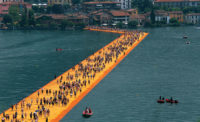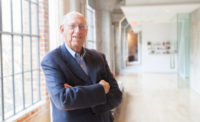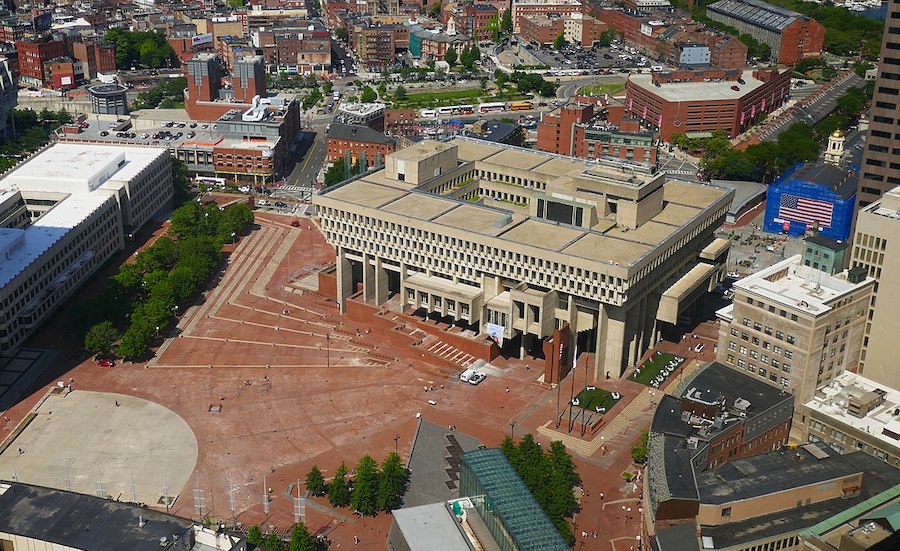Obituary: Michael McKinnell, 1935-2020

Boston City Hall in 2019
Photo © NewtonCourt via Wikimedia Commons

American Academy of Arts and Sciences in Cambridge, Massachusetts
Photo © Daderot via Wikimedia Commons


The beginning of Michael McKinnell’s career as an architect was almost like a fairy tale: In 1962, while a graduate student at Columbia University, the British-born McKinnell and his professor Gerhard Kallmann entered an open competition to design a city hall for Boston. Their scheme for a brutalist “hill town” (submitted with Edward Knowles, a licensed architect) was selected out of 256 entries. McKinnell, then just 26, moved to Boston as a co-founder of the firm Kallmann, McKinnell and Knowles (later Kallman, McKinnell and Wood).

On Friday, March 27, 2020, McKinnell was felled by COVID-19, according to his wife, Stephanie Mallis, who had also been a partner at the firm. McKinnell was 84.
Completed in 1968, Boston City Hall was an inverted ziggurat of poured concrete, inspired by Le Corbusier’s much smaller La Tourette monastery. Explaining the genesis of the design in an interview in the book Heroic: Concrete Architecture and the New Boston (2015), McKinnell said: “We believed that concrete was the appropriate material to use because it symbolized longevity, it symbolized permanence. It also symbolized a faith in the future—that the building was going to last. And that was an act of resistance against the expendable commercial architecture of the time.” He added, “If we could have, we would have used concrete to make the light switches.”
Boston City Hall was a critical success. Ada Louise Huxtable called it “one of the handsomest buildings around” and “a solid, impressive demonstration of creativity and quality—uncommon currencies in today’s environment.” But it was widely criticized as being off-putting and lacking human scale. (The vast, windswept plaza was a particular target.) As recently as a decade ago, Boston’s then-mayor, Thomas Menino, threatened to tear the building down. But it has been celebrated by a new generation of architects.

The firm’s later buildings, Paul Goldberger has said, were “more textured, more nuanced” and “seem to have been a response to the criticism of the City Hall.” McKinnell's best projects included Boston's handsome Hynes Convention Center, the carefully detailed American Academy of Arts and Sciences headquarters in Cambridge, which Huxtable said had “a classical clarity,” and the red-brick Independence Visitor Center in Philadelphia, as well as embassies, courthouses, and libraries. He also designed buildings for universities, including Harvard (where he taught for many years). In 1984, the firm won the AIA’s prestigious firm award. Alexandra Barker, a Brooklyn architect who worked for McKinnell in the 1990s, recalled him as a generous mentor.
In recent years, McKinnell designed several buildings in Israel while devoting time to abstract painting. Debbie Hagan, an art critic who visited him at his studio in Rockport, Massachusetts, in 2015, wrote that, some 60 years after he left his native Manchester, England, he was “still distinctly British—charming manners, rounded vowels, and tea in the afternoon with fruity cake (baked himself). Congenial and reserved, he’s just the opposite of the person one expects from a leader of brutalist architecture.”
Editor's Note: Architecture critic and RECORD contributing editor Robert Campbell, FAIA wrote the following tribute to McKinnell.
Soon after [winning the Boston City Hall competition], Gerhard Kallmann and Michael McKinnell happened to run into Philip Johnson on Madison Avenue in New York. McKinnell liked to quote what Johnson said on that occasion: "Ah! I'm so happy for you two young boys who have won this competition. Absolutely marvelous. I think it's wonderful—and it's so ugly!"
The architects regarded that as a great compliment. Like some Europeans who were experimenting with what came to be called Brutalism, the young Kallmann and McKinnell thought of concrete as an authentic and honest way to build because everything from the structural frame to the smallest details could be made of the same material, unlike what McKinnell called "the decadently degenerate frippery and surface concerns" of much commercial work of that era.
Good art isn't necessarily beautiful. City Hall is probably best understood as an ugly/wonderful work of architecture. Candidates for Boston mayor no longer promise to tear it down. There are always ideas for improvements, especially for the rather barren public plaza, but they never go anywhere. Currently the firm Sasaki has a scheme to plant 100 trees and add such seasonal attractions as ice cream or miniature golf.





